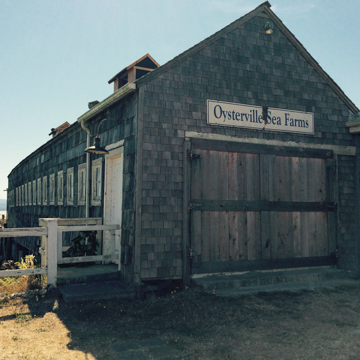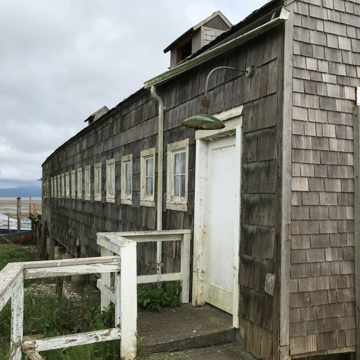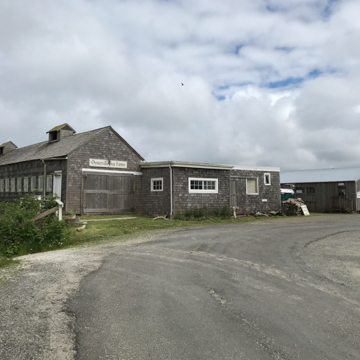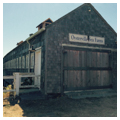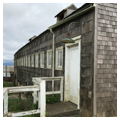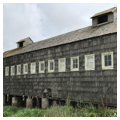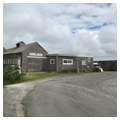The Oysterville Cannery is the one remaining commercial structure in the Oysterville Historic District, located in its northeast corner facing Willapa Bay. The building was erected in 1940 during the introduction of the large Japanese oyster variety to Oysterville, which spanned from the late 1930s into the 1940s.
The cannery is an elongated, wood-framed, one-story, gable-roofed structure featuring cedar siding and two cupolas. It rests on pilings embedded into the tidal flats. An additional lean-to structure was added at a later unknown date. Today, the cannery serves as the home of Oysterville Sea Farms—an organization that contributes a portion of its revenues to preserve the building and promote its history. The cannery itself ceased operation in 1967.





